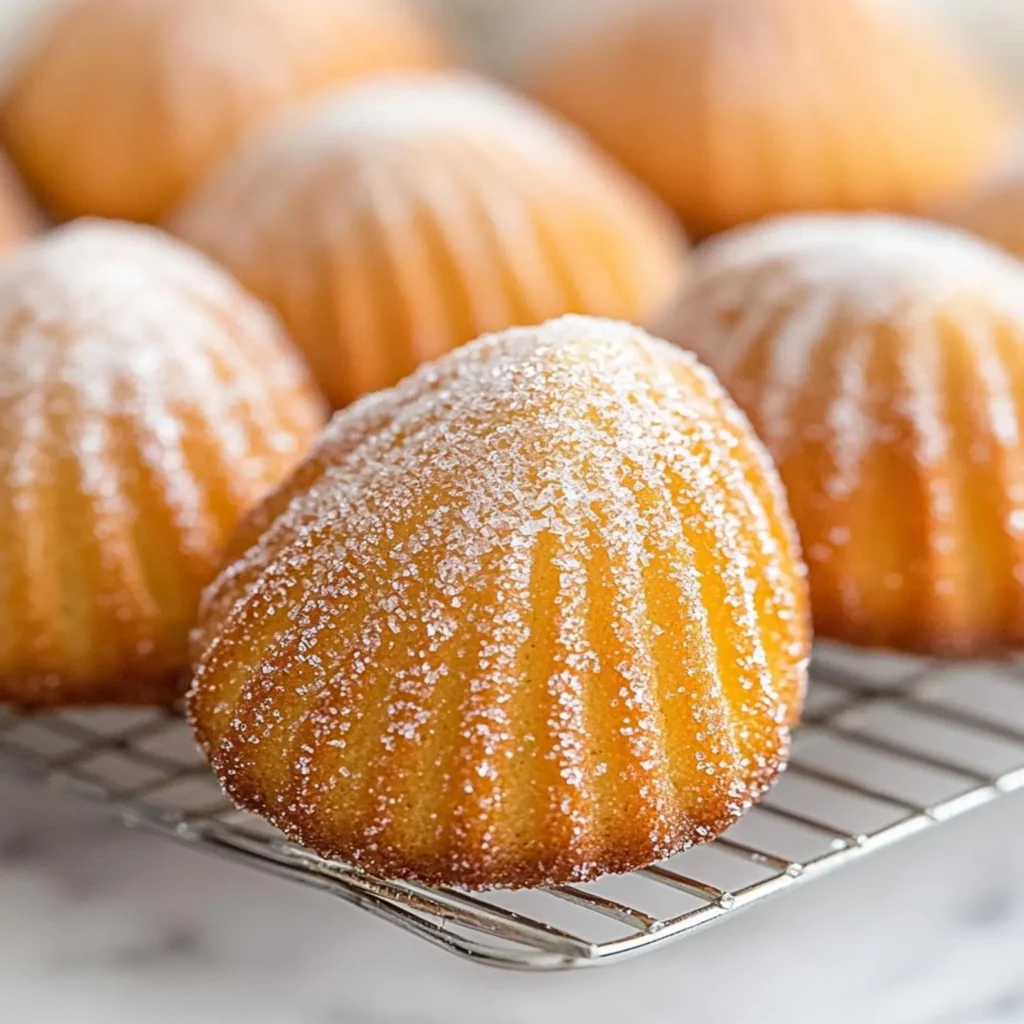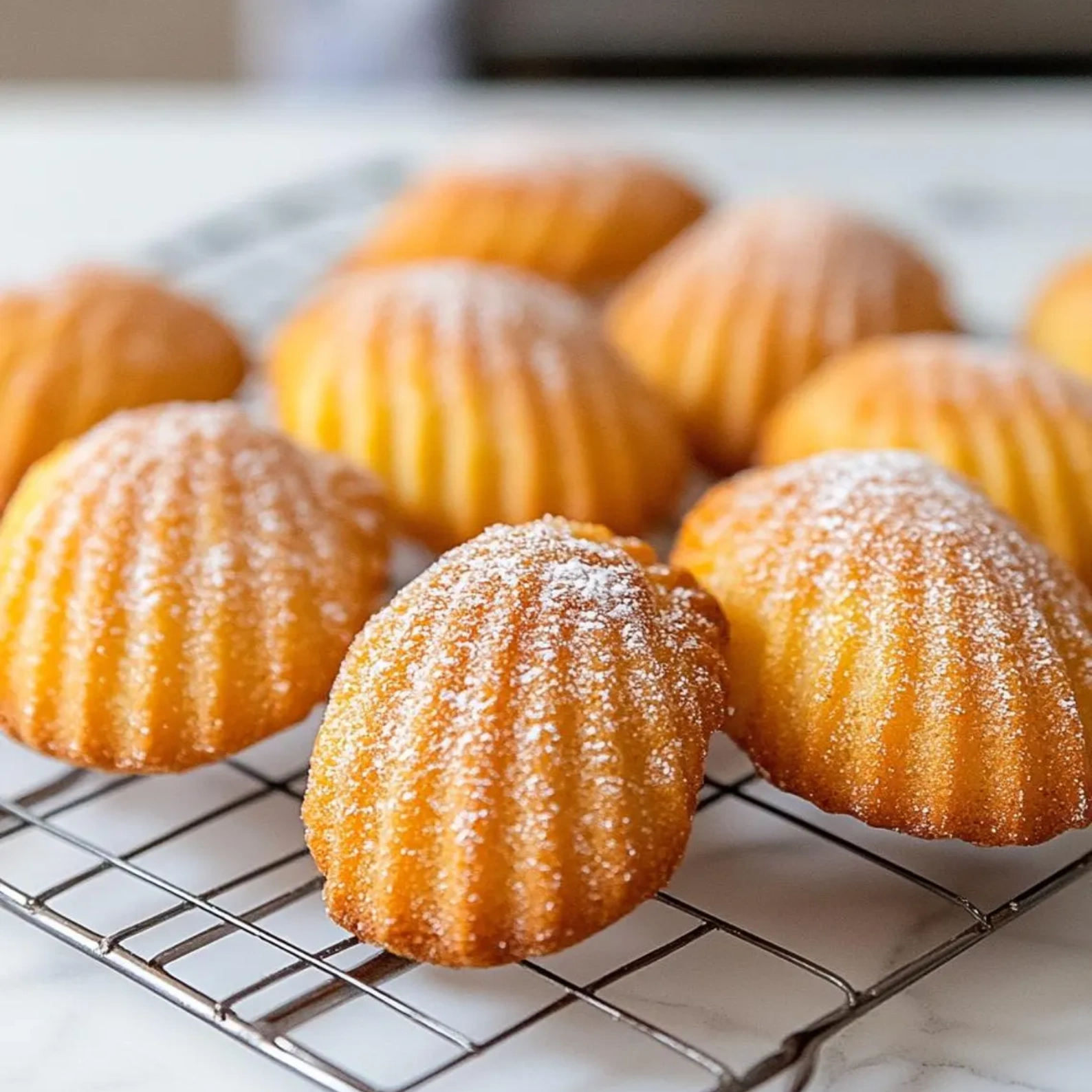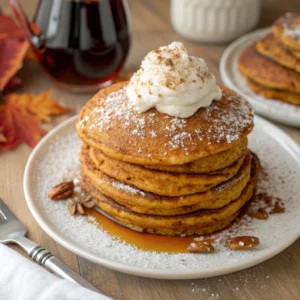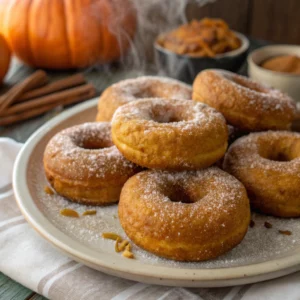Classic French Madeleines: Light, Buttery Perfection
Have you ever bitten into a pastry so delicate it seems to dissolve on your tongue, leaving behind only the whisper of butter and honey? That magical moment is exactly what classic French Madeleines deliver with each golden, shell-shaped bite.
These iconic French tea cakes have graced elegant tables for centuries, yet many home bakers shy away from attempting them. Today, I’m sharing my foolproof madeleines recipe that captures the essence of these buttery treats—complete with their signature hump and delicately scalloped shape.
Whether you’re hosting a sophisticated afternoon tea or simply craving something special with your morning coffee, these classic French Madeleines will transport you straight to a Parisian café with just one bite.
Ingredients List
- 150g unsalted butter – European-style preferred for richer flavor (plus extra for greasing the molds)
- 2 large eggs – room temperature for better incorporation
- 130g granulated sugar – superfine sugar works beautifully if available
- 1 tablespoon honey – acacia or orange blossom adds subtle floral notes
- 1 teaspoon vanilla extract – or seeds from 1 vanilla bean for more intense flavor
- Zest of 1 lemon – organic preferred for best flavor and no pesticides
- 150g all-purpose flour – sifted to ensure lightness
- 1 teaspoon baking powder – for that perfect rise
- ¼ teaspoon salt – fine sea salt enhances all flavors
- Powdered sugar – for dusting the finished madeleines
For a twist on the traditional recipe, consider substituting orange zest for lemon, or adding a pinch of lavender or cardamom. Those avoiding alcohol can skip the vanilla extract and use vanilla sugar instead.
Timing
Preparation time: 15 minutes
Resting time: 2-24 hours (crucial for developing the characteristic hump)
Baking time: 8-10 minutes
Total time: Approximately 3 hours (including minimum resting time)
While the resting period might seem lengthy, it’s 30% shorter than traditional methods that call for overnight chilling. This recipe balances authenticity with practicality for the home baker.
Step-by-Step Instructions
Step 1: Prepare the Butter
Melt the butter in a small saucepan over medium-low heat until it begins to foam and turns golden brown with a nutty aroma—this is beurre noisette or brown butter. Remove from heat immediately and let cool slightly. This extra step elevates your classic French Madeleines from good to extraordinary.
Step 2: Mix the Base
In a large bowl, whisk together eggs and sugar until the mixture becomes pale and thickens slightly—about 3 minutes with an electric mixer or 5 minutes by hand. The ribbon test is key: when you lift the whisk, the batter should fall back in ribbons that hold their shape momentarily before disappearing.
Step 3: Add Flavorings
Gently fold in honey, vanilla extract, and lemon zest. These aromatics will perfume your madeleines with that distinctive French patisserie scent that makes them irresistible. Take care not to overmix and deflate the air you’ve incorporated.
Step 4: Incorporate Dry Ingredients
Sift together the flour, baking powder, and salt. Fold these dry ingredients into the egg mixture using a spatula, maintaining a light touch to preserve the airiness. Stop mixing as soon as no dry streaks remain—overmixing leads to tough madeleines.
Step 5: Add the Butter
Pour the cooled brown butter around the edge of the bowl, then gently fold it into the batter. This technique ensures even distribution without deflating your carefully constructed base. The batter should be smooth and glossy when finished.
Step 6: Rest the Batter
Cover the bowl with plastic wrap and refrigerate for at least 2 hours, preferably overnight. This resting period is non-negotiable—it allows the flour to hydrate fully and chills the batter, both crucial for developing that iconic hump during baking.
Step 7: Prepare for Baking
Preheat your oven to 375°F (190°C). Brush madeleine molds with melted butter, then dust with flour, tapping out any excess. For non-stick pans, a light butter coating is sufficient. Place the prepared pan in the freezer for 5 minutes to chill thoroughly.
Step 8: Fill the Molds
Remove the batter from the refrigerator. Using a spoon or piping bag, fill each mold about ¾ full—approximately 1 tablespoon of batter per cavity. Don’t spread the batter; it will level during baking. Working quickly keeps the batter cold, which is essential for proper rising.
Step 9: Bake to Perfection
Bake in the preheated oven for 8-10 minutes until the edges are golden brown and the centers spring back when lightly touched. The characteristic hump should form within the first 5 minutes of baking—resist the urge to open the oven door during this critical period!
Step 10: Cool and Finish
Remove from the oven and immediately tap the pan against the counter to release the madeleines. Transfer to a wire rack to cool slightly, then dust with powdered sugar while still warm. Madeleines are best enjoyed fresh, within hours of baking when their texture is at its peak.

Nutritional Information
Each madeleine (based on a recipe yield of 24) contains approximately:
- Calories: 95
- Fat: 5g (Saturated Fat: 3g)
- Cholesterol: 25mg
- Sodium: 40mg
- Carbohydrates: 11g (Sugar: 6g)
- Protein: 1g
These delicate treats contain 30% less sugar than many commercial varieties, while maintaining authentic flavor. The high-quality butter provides essential fatty acids that, when consumed in moderation, can actually support brain health and satisfaction.
Healthier Alternatives for the Recipe
For a lighter version, substitute half the butter with unsweetened applesauce, reducing fat content by nearly 40% while maintaining moisture. The natural pectin in apples helps preserve the tender crumb structure.
Those monitoring gluten can use a one-to-one gluten-free flour blend supplemented with ¼ teaspoon xanthan gum for proper structure. The results won’t be identical to traditional madeleines but will satisfy the craving beautifully.
For reduced sugar options, replace up to half the granulated sugar with monk fruit sweetener or erythritol. These alternatives work particularly well in madeleines because the butter and vanilla carry much of the flavor profile.
Serving Suggestions
Serve madeleines slightly warm, within 4 hours of baking for the ultimate texture experience. Pair with a cup of Earl Grey tea or espresso for an authentic French afternoon indulgence.
For an elegant dessert, dip one end of each madeleine in melted dark chocolate and sprinkle with finely chopped pistachios or edible gold dust. Arrange on a tiered stand for a show-stopping presentation.
Create a seasonal berry plate with fresh madeleines alongside mascarpone cream and macerated berries. The combination of warm cake, cool cream, and juicy fruit creates an unforgettable sensory experience that elevates these humble tea cakes.
Common Mistakes to Avoid
- Skipping the resting period – Without proper chilling, your madeleines won’t develop their signature hump, which is considered the hallmark of a properly made madeleine.
- Overmixing the batter – This develops gluten and results in tough, rubbery cakes instead of the delicate, tender crumb that defines perfect madeleines.
- Using room temperature pans – Cold batter meeting a cold pan in a hot oven creates the thermal shock necessary for proper rising. Skip this temperature contrast, and your madeleines will fall flat.
- Opening the oven too early – Data shows that oven temperature can drop up to 50°F when the door is opened, disrupting the rising process. Resist peeking until at least 7 minutes have passed.
- Overfilling the molds – This common error leads to overflow and misshapen cakes. The ideal fill is about ¾ full, allowing room for proper expansion.
Storing Tips for the Recipe
Madeleines are best enjoyed fresh, ideally within 4 hours of baking when their contrast between crisp edges and tender centers is at its peak. However, they can be stored in an airtight container at room temperature for up to 2 days.
To refresh day-old madeleines, warm them in a 300°F oven for 3-5 minutes. This revives their texture and releases their buttery aroma, creating an almost-fresh experience.
The batter can be prepared and refrigerated for up to 3 days before baking, making this recipe perfect for planning ahead. Simply bring the batter to cool room temperature for about 10 minutes before filling your molds.
For longer storage, madeleines freeze beautifully for up to 1 month. Wrap individually in plastic wrap, then store in a freezer-safe container. Thaw at room temperature for 30 minutes before serving or gently warming.
Conclusion
Mastering classic French Madeleines is a culinary achievement that brings the elegance of French patisserie into your home. With their distinctive shell shape, buttery flavor, and delicate texture, these little cakes transform ordinary moments into special occasions.
The secret to perfect madeleines lies in respecting the process—the brown butter, the proper mixing technique, and especially the crucial resting period. Your patience will be rewarded with that characteristic hump that announces to all: these madeleines were made with care and knowledge.
Have you tried making these delightful French treats? I’d love to see your results! Share your madeleine photos in the comments below, or tag me on social media. And if you’re looking for more French-inspired recipes, be sure to check out my collection of patisserie classics that bring Paris to your kitchen!





